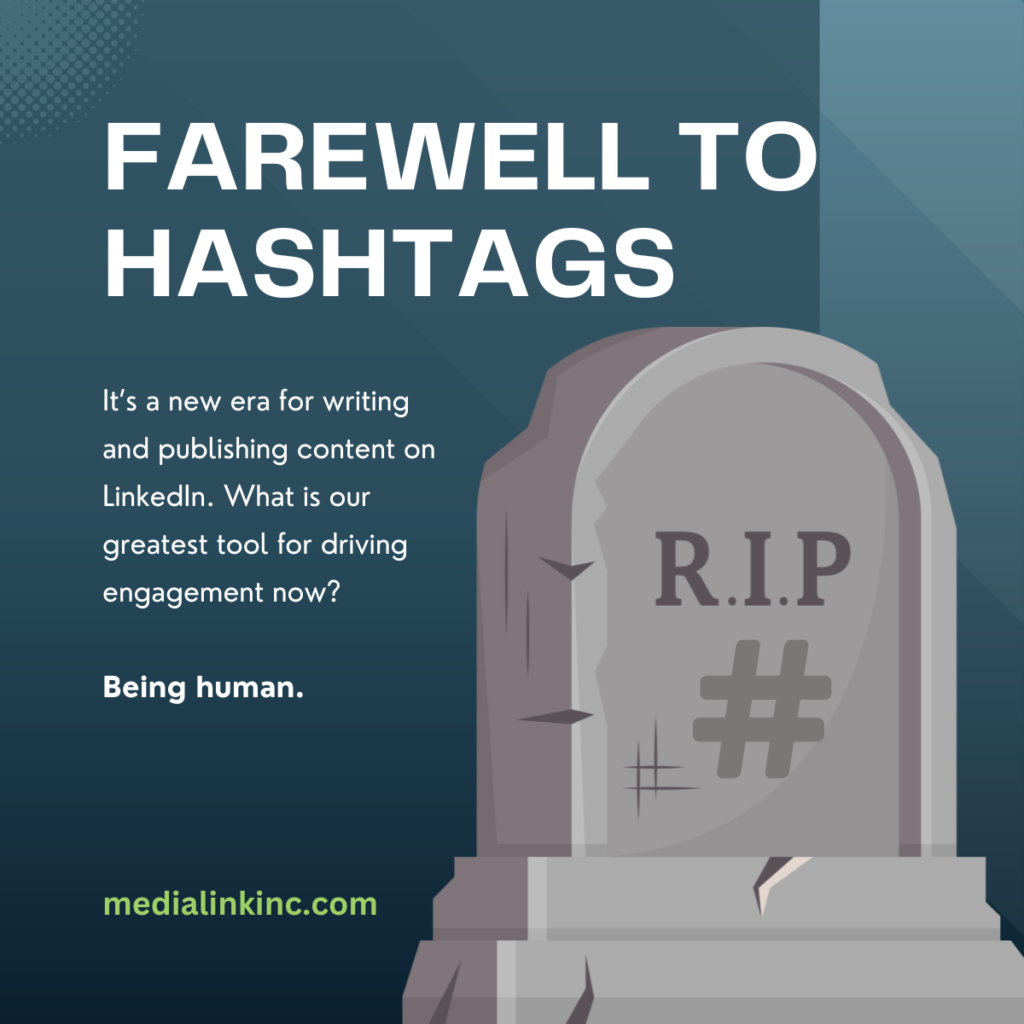LinkedIn is now phasing out Hashtags and the recent updates are beginning to impact businesses and how they approach drafting posts and articles.
LinkedIn did away with its “Creator Mode,” in February 2024. This tool was used to find up to five relevant hashtags in the About section of your profile. Then, in LinkedIn’s March 2024 Features and Updates blog, they sounded a death knell for the future of hashtags on their platform:
 Hashtags are intended for creators to categorize their posts and improve their discoverability. The change has certainly vexed some LinkedIn users, leading to the big question: Why?
Hashtags are intended for creators to categorize their posts and improve their discoverability. The change has certainly vexed some LinkedIn users, leading to the big question: Why?
Here are the main factors behind the shift away from hashtags:
- New algorithms use topics and keywords within posts, reducing the value of hashtags in regard to discovery.
- LinkedIn acknowledges they are not designed for viral use. They want users to concentrate on authentically connecting and growing their audience.
- Hashtags detract from professionalism. This goes deeper than a visual impression; excessive hashtag use can signal a lack of strategic keyword selection.
- Hashtags are vulnerable to abuse by bots who spam popular hashtags with unrelated content.
This leaves us with a challenge. How do we engage new audiences on LinkedIn? Can we replicate a hashtag’s functionality through our writing? Here are our tips for boosting post performance in the new landscape of Linked:
- Write like a human: It’s very easy to glaze over text clearly AI-generated. We have a major advantage though: being real humans! Perform your own research on your topic using multiple sources, or better yet, use internal company data. Consider and make deductions about the information you’d like to present. Tell stories, add opinions, show empathy, and use humor to make your content a worthy read.
- Make it easy to parse: Walls of text are generally despised, and for good reason. They strain our eyes, smack of unorganized thoughts, and are extremely frustrating for neurodiverse individuals. Break up text with paragraph breaks, number lists, and bullet points. Employ photos, graphics, and even emojis to add color and support comprehension.
- Write a great headline: Stories start with a hook, and your posts should too! This is the text which decides whether or not readers will engage with your content. Try action words, questions, or challenges.
- Incorporate your keywords: Take note of what hashtags you would use, then work those phrases into your text. There’s no shortcut for this, as your human brain is key to using these words judiciously. Too many registers as spam and can make your brand appear less trustworthy.
- Engage with your network: This evergreen social media advice is more important than ever. Read, like, and comment on posts in your circuit to quickly increase the eyes on your own content. A quick way to jumpstart interaction is to @mention a colleague with expertise on your topic.
- End with a prompt: A 2012 Harvard study found talking about oneself releases dopamine in the brain. That explains why questions and solicited personal opinions are routinely and successfully used to drive social media engagement.
 Transitioning away from hashtags may seem daunting, yet there is still an opportunity to set our content up for success. With the new algorithm favoring personalized content and meaningful dialogues, AI-generated text will take a backseat to traditional writing and marketing skills.
Transitioning away from hashtags may seem daunting, yet there is still an opportunity to set our content up for success. With the new algorithm favoring personalized content and meaningful dialogues, AI-generated text will take a backseat to traditional writing and marketing skills.
If you’re unsure about crafting persuasive copy, Media Link Inc. has your back! Consider the wealth of knowledge and creativity a dedicated marketing specialist can provide before investing in an AI writing subscription. Our team is equipped and enthusiastic to breathe life into your brand’s narrative.

